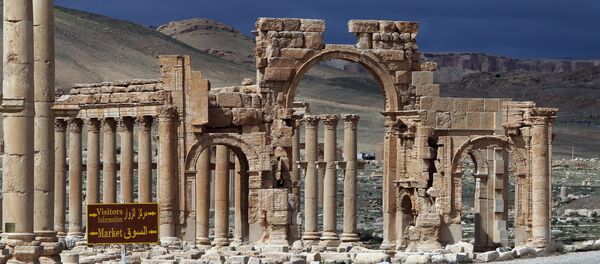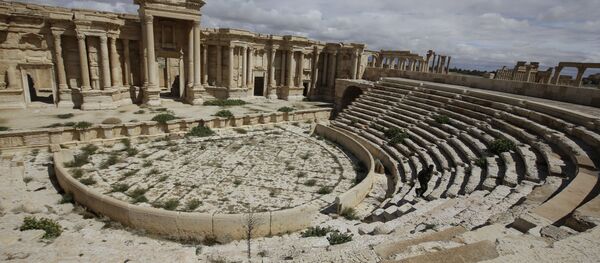MOSCOW, May 20 (Sputnik) — Palmyra was an ancient city, located in central Syria near the modern day city of Tadmor. It was a major center in terms of caravan trade and crafts. Located in an oasis 240 kilometers northeast of Damascus and over 306 kilometers from the Euphrates River, it owed its prosperity to its advantageous location on the confluence of east-west trade routes.
Palmyra enters historical records in the first half of the second millennium BC, when it was mentioned in the Cappadocian tablets and Tablets of Mari. Palmyra was destroyed by the Assyrians in the end of the second millennium BC, and restored by King Salomon of Israel in the X century BC.
In the second-half of III century AD Palmyra became de facto independent under Odaenathus. Odaenathus’s widow Zenobia succeeded him to the throne (266/267—272) and raised an anti-Roman rebellion. She invaded Roman Arabia and Egypt before her troops were defeated in 272 by Roman Emperor Aurelian. After the suppression of the anti-Roman insurgency, Palmyra was raised to the ground and lost much of its influence.
In the VII century the city was captured by the Arab Rushidun Caliphate and transformed into a Muslim fortress, but an earthquake and ensuing pillaging precipitated the demise of the city, which soon fell into ruin.
In 1678, English merchant Halifax discovered the ruins of Palmyra, which at that time were barely accessible; they remained unexplored or described until 1751-1753.
Palmyra is one of the few remaining city complexes dating back to Antiquity. Part of the ancient city was discovered during excavation work, including a regular town plan with streets flanked by grandiose Corinthian colonnades.
The city had two centers: one dedicated to religious worshiping to the east, and another focused on trade to the west. In II century AD they were linked by the so-called Great Colonnade that stretched for 1,100 meters, was 11 meters wide and had a three-bay Monumental Arch (beginning of III century AD). The Temple complex was constructed by 32 AD and included a court with a colonnade wall, ritual pools, an altar and a temple presenting a blend of Roman orders with Eastern sumptuousness and grandness. A theater was to be found in Palmyra’s center along with richly decorated thermal baths.
A necropolis with three kinds of tombs was located outside the city walls: towers, underground tombs and atrium buildings. Many statues, reliefs, mosaics and wall paintings were discovered there and are now kept in the National Museum of Damascus or in other collections. The ancient city is covered with fragments of capitals, entablature, friezes and other architectural elements.
Palmyra’s ruins are among the best examples of Ancient Roman architecture. In I-II centuries AD Palmyra’s art and architecture benefited from contact with a number of civilizations, presenting a blend of Greco-Roman techniques, local traditions and Persian influences. In 1980 the ruins were classified as a World Heritage Site by UNESCO.







